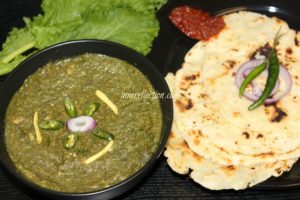
Sarson da saag as it is called in Punjabi or Sarson ka saag in Hindi is a famous Punjabi delicacy that is prepared with mustard leaves and spinach leaves. Mustard leaves produce heat in the body, thus it helps us to stay warm during the winters. It’s a perfect dish to eat with roti, paratha or poori. It is traditionally eaten with Makki ki roti or Makai ka roti, which is a flat bread made out of maize flour/corn meal. I had it with the Makki ki roti which I enjoyed to my heart’s content and with its every bite in my mouth my heart was doing ‘balle balle’ 😀
Ah, the joy of tasting this much awaited Punjabi delicacy! In fact, every time I would go to the Indian grocery store here in the US, I would buy these mustard leaves thinking that I would prepare this dish at home, and by the time I wanted to prepare this dish, the leaves would rot away. This happened a couple of times in the past few months, and every time I felt a sense of guilt washing over me when throwing those leaves in the trash. A friend of mine suggested using the readymade paste that is available at stores, but my obsession with freshly made food restricted me from doing that. So the last time I bought these leaves, I decided to make it on the same day, without storing it in the fridge and giving it a chance to go to waste. And when I finally prepared it, I felt beyond happy that about how easy a dish it was to prepare, not to mention the fact that it tasted super delicious! This particular Punjabi dish won my heart over, and during the entirety of me feasting upon this curry, I was lost in its heavenly, herby taste. And the Makki ki roti completed this dish like no other could!
Check out the recipes of other appetizers, salads, main courses, chutneys & pickles and desserts on my blog!
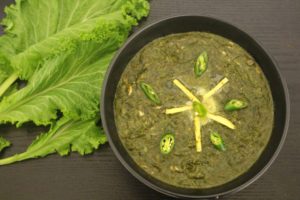
Sarson da Saag Recipe:
Wash and drain the mustard and spinach leaves in a colander.
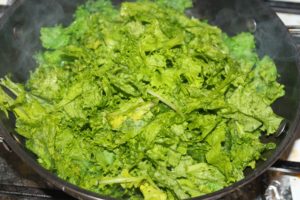
Heat a kadai/saucepan with very little oil and add the mustard leaves. Keep the heat in medium and cook the mustard leaves till they appear withered and become mushy.
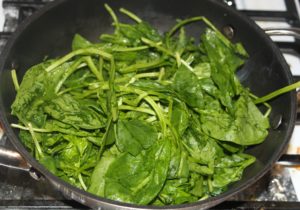
Also add the spinach leaves to the pan and cook till it becomes soft and pulpy. You can cook the leaves together, but since my kadai didn’t fit the quantity, I had to cook them separately. It doesn’t take much time to cook the green leaves, hence it wasn’t much of an issue to cook them individually. Transfer this mustard and spinach mix to a blender jar and grind it into a smooth paste. You can also use the canned paste if you wish to.
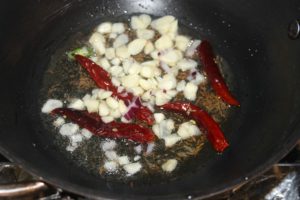
Heat oil/ghee in a saucepan and add in some cumin seeds and dry red chilis. Once they are nicely roasted, add some chopped garlic to it. I enjoy the small bits of fried garlic in curries, so I always add them in my dishes. You can also use the ginger-garlic paste instead of chopped garlic, if that’s what you prefer.
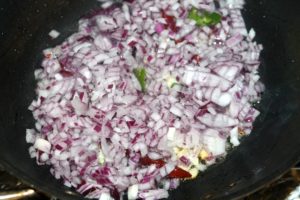
Once the garlic is nicely roasted, add finely chopped onions. Let the onions cook till they turn slightly golden in color.
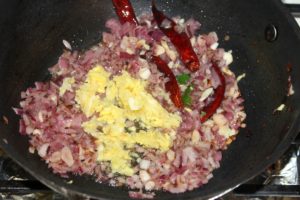
Add in the ginger-garlic paste. Since I already added the bits of garlic earlier, I just added 2-3 cloves of garlic to make the paste. Maintaining the heat in low, cook it till the raw aroma of the ginger-garlic paste vanishes.
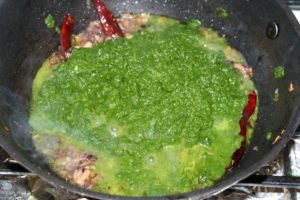
Add the purée of the mustard and spinach leaves to the pan and cook it for another 5-7 minutes. Keep the lid open if you want to preserve the green color of the curry.
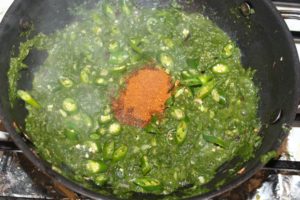
Once the purée has cooked well, add some garam masala (whole spice mix) and chopped green chilis. I didn’t use any other spices for this dish because I wanted to preserve the original flavor and taste of the mustard leaves. After all, this dish is all about the mustard leaves; we wouldn’t want any other ingredient to overpower the hero of this dish. For spice, I just used green chilis. I didn’t use any red chili powder in this dish, as I felt it’d affect the color. However, you are most welcome to do add the red chili powder if you wish to do so. I added the green chilis in the end so that they can still be slightly raw and act as an element of crunch during the process of eating the dish. Cook it for 2-3 minutes for the spice to settle in the curry.
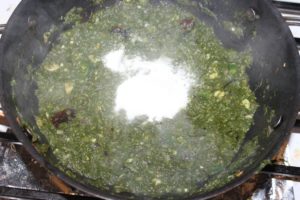
Finally add a table spoon of corn flour to the dish to make it more thick and rich in texture. Corn flour absorbs the water from the green leaf mix and add some texture and taste to the curry. Cook it for another 2-3 minutes and then turn the heat off. You can also add some cream on the top, but I prefer to keep it low in calories so I didn’t add it in my dish. Serve this dish while hot and enjoy!
I prepared Makki ki roti to eat with this dish, which is an authentic combination in Punjabi food. Click here for the recipe of the Makki ki roti on my blog!
When I was feeding this dish to my son Suhas who is normally very fussy when it comes to food, to my surprise, he was asking for more and more of it before I could take an another piece of roti with the curry in my hand. What else could make a mother happy than seeing her kids enjoy the food prepared by her? Since then, Sarson da saag has been on my menu at least once a week in these winter days; you should definitely try it out! 🙂
Click here to check the latest posts on my blog!
